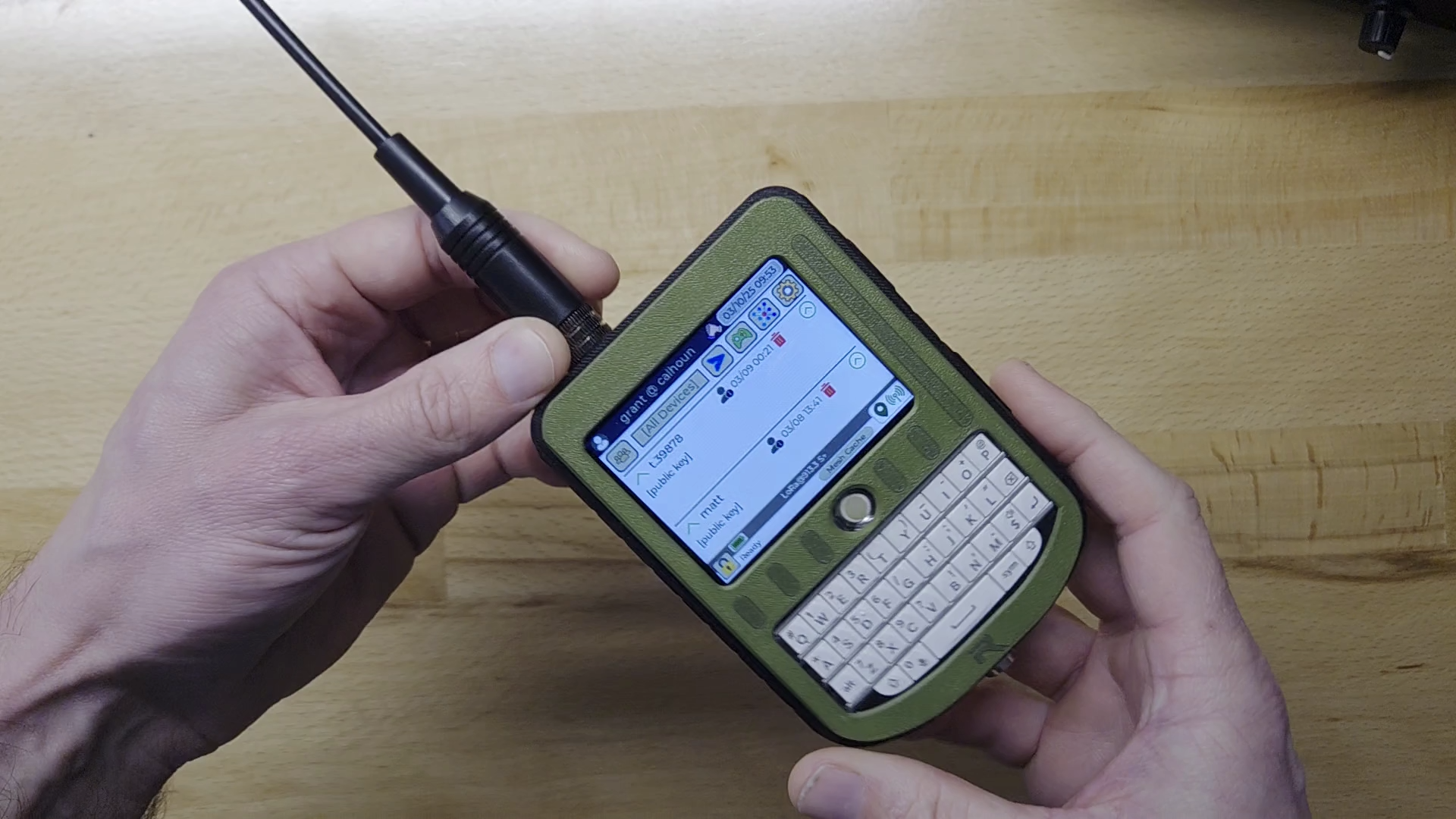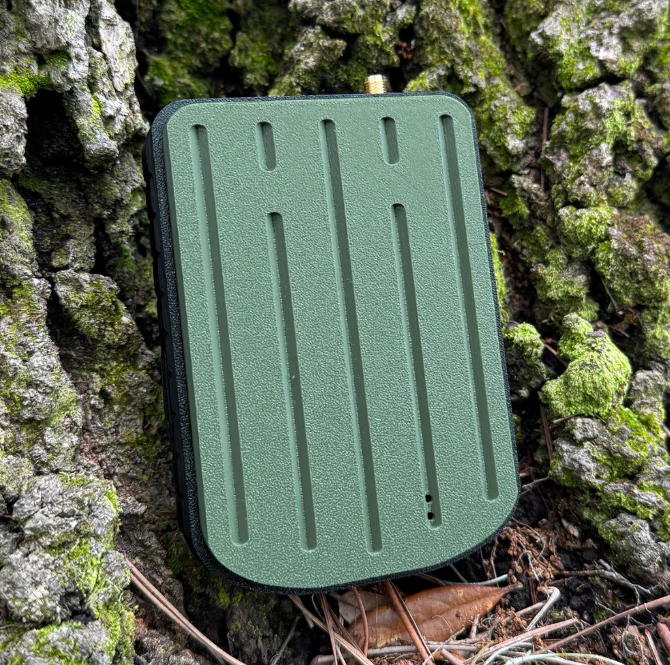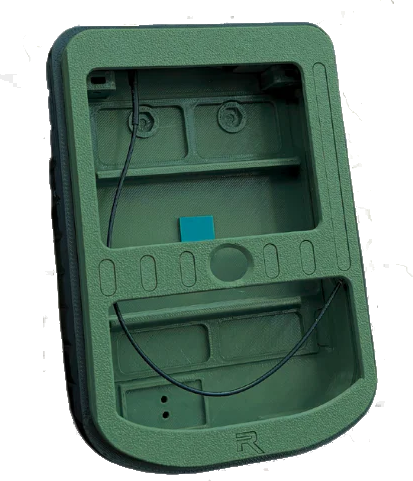Rokland T-Deck Complete
The T-Deck Complete is a fully assembled, pocket-sized device by Rokland, designed to run LoRa-based mesh communication firmware.
Who is the Rokland T-Deck Complete For?
The ability to communicate off-grid is something you may not realize you need, until the moment you actually need it. Of course, by that point, it’s too late.
If you ever wander beyond the range of cell towers, experience impaired cell service, or just want to be sure your communications are private, you may want to get a grid-independent comms system.
There are multiple ways to do that, and the Rokland T-Deck Complete offers a very nice and very reasonably priced hardware solution to that problem.
build quality : Excellent
Durability
Upon receiving one of these units, the very first thing I did was drop it onto a concrete floor from about 4 feet. I’d like to say this was an intentional drop test, but…well, it wasn’t. Anyway, nearly all the images of the unit in this review are post-drop test, and as you can see, there’s not even a mark on it.
Layered Case Design
Rokland’s case features a layered design, where a mid-layer frame is dense and can take the brunt of a drop. It seems to provide fairly good protection.
Solid Antenna Connection
One thing that’s a little tricky with devices with antennas is getting the SMA connector area solid enough to support the bending forces that will be put on it by antennas
Rokland’s mid-frame definitely helps to provide a solid base for the SMA connector. Beyond that, the included antenna has a wide and solid base, which adds a larger area to spread forces where the antenna and case meet. The end result is that you’ll probably never experience that area getting flimsy.
Ports & Switches
The USB-C port and SD card slot are both easily accessible. The power switch is solid and easy to work. The reset button can be reached, but you’d need a paper clip or something. For most firmware, access to the reset button is not necessary.
Usability : Very good - but don’t expect it to be quite like a mobile phone
To fully test the Rokland unit’s usability and mesh communication capabilities, I installed our ChatterBox off-grid mesh comms firmware, which anyone can download for free.
Touch Screen
The IPS touchscreen is bright, easy to read, and responsive. Swiping works pretty much like you’d expect. Given the processor onboard is running at probably 1/10th the speed of your phone’s, some patience is warranted.
Trackball
With the ChatterBox firmware, the trackball is essentially what wakes the device up and makes it responsive (and do less background tasks). Scrolling works quite well with the trackball. It’s also a button you can press to navigate between screens.
Keyboard
In my opinion, the qwerty keyboard is one thing that really makes t-deck devices stand out. There’s no mistaking whether you’re on the right key or whether you’ve fully pressed it. It works great even if your fingers are cold or wet.
Responsiveness
There are limitations, given that you’re using a fairly low-power device with much less processing power and memory than a modern phone. However, it is capable of being acceptably responsive and quick enough for basic communication and location features.
My Test Setup
Base Station
This is a ChatterBox mesh E-Paper mini node, utilizing a 20 watt bi-directional amp and an 86” roof-mounted omnidirectional Signal Plus antenna. This setup (the amp) requires an amateur radio license in the US.
ChatterBox GPS Mesh Node
This ChatterBox GPS-enabled mesh node is sporting a well-tuned rubber ducky style antenna. The performance of this node should be similar to the Rokland’s, so I’d expect whatever distance we can achieve with would also be achievable between to Roklands.
This unit is not amped, so its performance should be quite similar to what you’d get with any basic node with a similar antenna. This setup does not require any special licensing to operate within the US.
I positioned this unit in a fairly good location, with regard to line-of-sight.
ChatterBox Mesh Solar Base Station / Node
This is a completely off-grid solar powered mesh node (no power required) that is occasionally available in the chatters.io mesh comms products store.
It’s a ChatterBox Mini Node (T3S3) inside a Rak solar enclosure. It ships with both a 15” omni fiberglass antenna (shown) and a smaller rubber ducky-type antenna for use as a mobile node.
For purposes of this test, I’m using the 15” omni antenna. I positioned this unit in a fairly good location, with regard to line-of-sight.
Results
Testing is still underway, more results coming soon…
Battery Life
Battery life was tested running the ChatterBox mesh firmware non-stop, which is how the firmware was designed to run for optimal meshing.
Typical Use: 12 hours
Infrequent Use: 16 hours
Full Specs
Rokland’s T-Deck Complete is based on the LilyGo T-Deck development board. This board is quite developer-friendly:
ESP32 S3FN16R8 dual-core LX7
2.4 GHz Wifi + Bluetooth 5 (BLE)
16 MB of Flash, 8 MB PSRAM
2.8” 320x240 Color IPS LCD
SX1262 LoRa Transceiver
Integrated keyboard and trackball
Based on the Lilygo T-Deck
The T-Deck is a great platform to build on, but obviously not quite ready for you to use. Rokland finishes the device by adding:
Custom enclosure created by QuantumShadow3D
3000 mAh battery
External detachable Rokland 2.5 dBi 20cm whip antenna
GPS module
Rokland’s Customizations

















